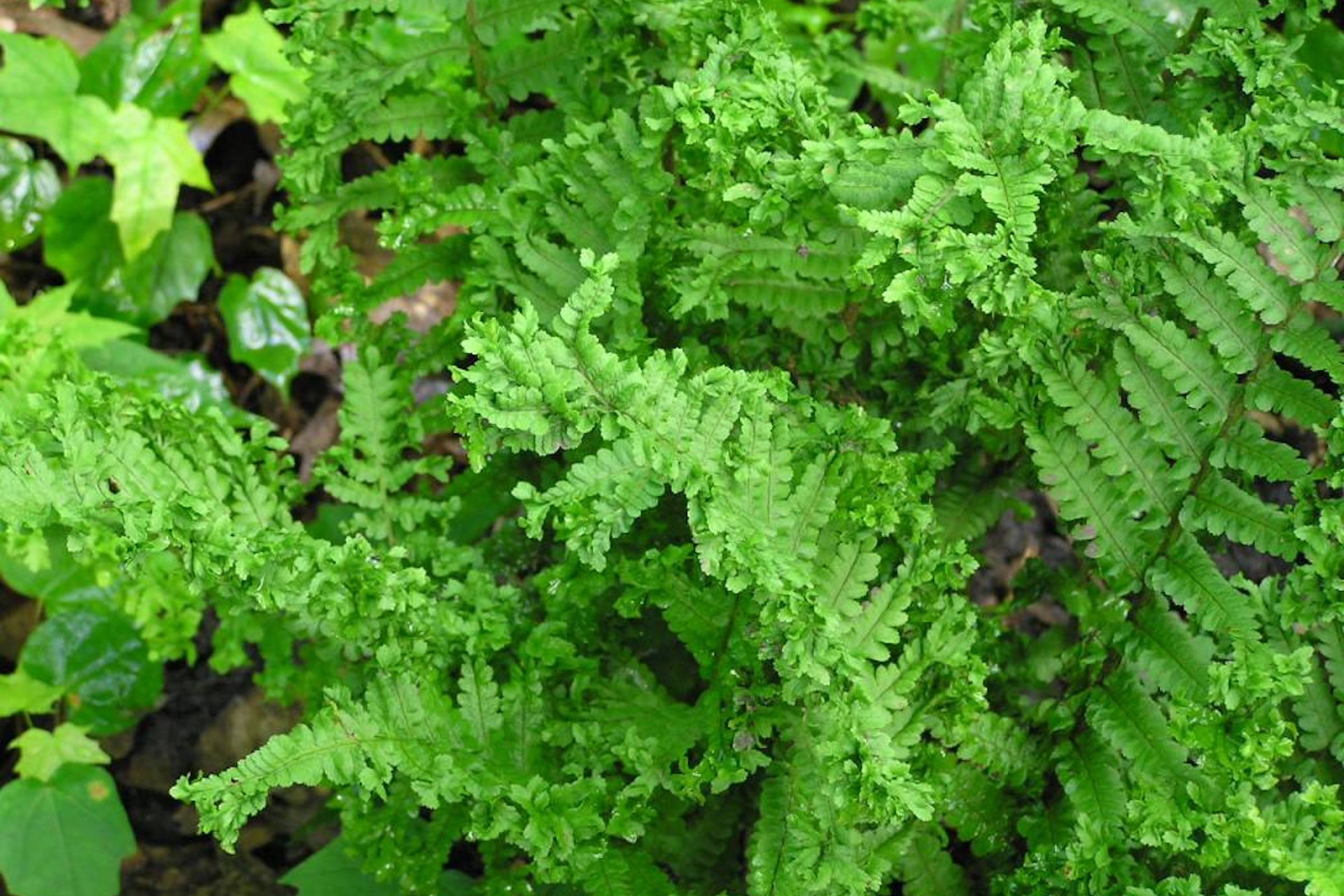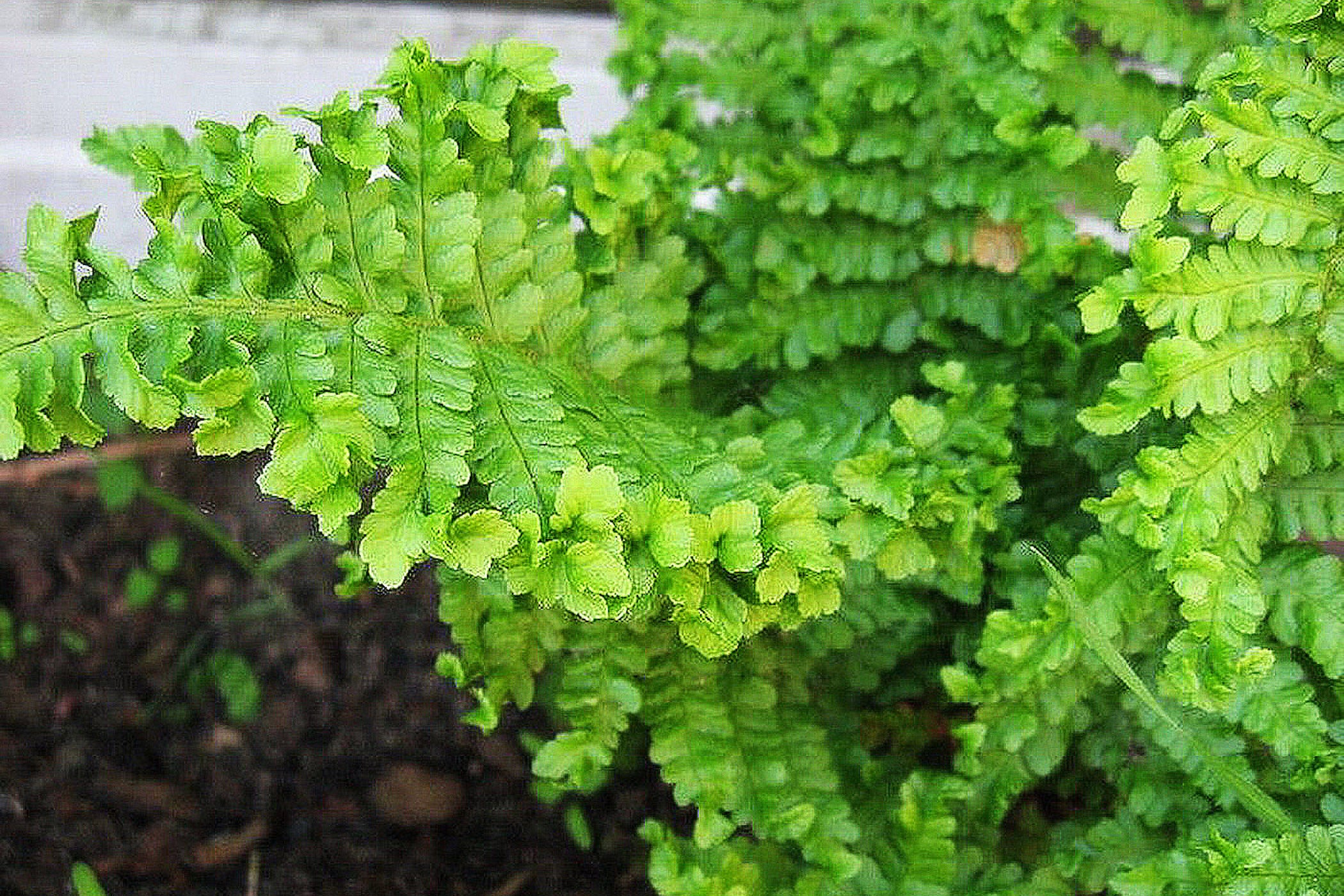Dryopteris filix-mas 'Crispa Cristata'
Approx. 0.5 litre pot
About this cultivar:
Dryopteris filix-mas 'Crispa Cristata' is a clump-forming, semi-evergreen fern. The bright green, erect to arching, fronds are crested at the tips and have ruffled edges. The Latin adjective crispa means 'wrinkled' or 'curly' and cristata is derived from the Latin word cristatus meaning 'tufted' or 'crested'. I think 'Curly Crested' would be a better name....more fun in any case..
The species, Dryopteris filix-mas, is a common fern of the temperate Northern Hemisphere, native to much of Europe, Asia, and North America. It favours damp shaded areas in the understory of woodlands, but also shady places on hedge-banks, rocks, and screes. It is a robust deciduous-to-semi-evergreen fern forming a lovely shuttlecock-like tuft of lance-shaped fronds after they unfurl in spring.
Often called the male fern, the plant is sometimes referred to in ancient literature as worm fern, reflecting its former use against tapeworm. Its specific epithet filix-mas means 'male fern' (filix 'fern', mas 'male'), as the plant was thought to be the male version of the common lady fern Athyrium filix-femina being robust in appearance and vigorous in growth.
This Curly Crested Male fern has the RHS AGM!
- Position: Full shade, partial shade
- Soil: Almost any soil, grows well in Ballyrobert
- Flowers: -
- Other features: Grows well in Ballyrobert, Woodland Plant, Dappled Shade or Full Shade Loving, Interesting Foliage or Fruit, Royal Horticultural Society Award of Garden Merit (RHS AGM)
- Hardiness: H7 - Hardy in the severest European continental climates (< -20°C), Fully hardy - grows well in Ballyrobert!
- Habit: Tufted, Clump forming, bushy
- Foliage: Semi evergreen
- Height: 60 - 90 cm (2 - 3 ft)
- Spread: 45 - 60 cm (1.5 - 2 ft)
- Time to full growth: 5 to 10 years
- Plant type: Herbaceous Perennial, fern
- Colour: Green
- Goes well with: Shade
About this genus:
Dryopteris is a fern genus of 225 species from around the world that give us the majority of our great garden ferns. The genus name comes from the Greek words drys (tree) and pteris (fern) in possible reference to this fern's typical habitat in woodland areas. It is a good idea to put Dryopteris (male ferns) near Athyriums (lady ferns) for reasons that (I hope) are obvious.
Dryopteris species come in a variety of shapes and sizes. Most gardeners assume that all ferns are green but Dryopteris species have variation in that regard - which ironically makes many people think they a dying or drying out! - once a week I have a customer telling me they need watered! The new growth on some species may be copper or cinnamon or even black.
Like most garden ferns, Dryopteris plants prefer light shade, almost full shade. Soil wise - anything that isn't too extreme. How to use them? Well... try shady areas!








